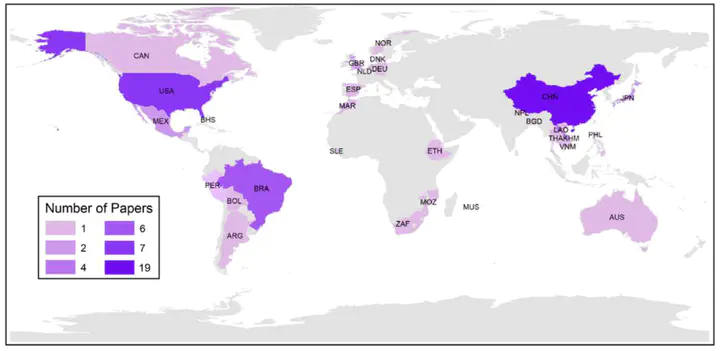
Abstract
In an increasingly interconnected world, human–environment interactions involving flows of people, organisms, goods, information, and energy are expanding in magnitude and extent, often over long distances. As a universal paradigm for examining these interactions, the telecoupling framework (published in 2013) has been broadly implemented across the world by researchers from diverse disciplines. We conducted a systematic review of the first five years of telecoupling research to evaluate the state of telecoupling science and identify strengths, areas to be improved, and promising avenues for future study. We identified 89 studies using any derivation of the term telecoupling. These works emphasize trade flows, information transfer, and species dispersal at international, national, and regional scales involving one or a few countries, with China, Brazil, and the United States being the most frequently studied countries. Our review showed a rising trend in publications and citations on telecoupling, with 63% of identified telecoupling studies using the framework’s specific language (e.g., “flows”, “agents”). This result suggests that future telecoupling studies could apply the standardized telecoupling language and terminology to better coordinate, synthesize, and operationalize interdisciplinary research. Compelling topics for future research include operationalization of the telecoupling framework, commonalities among telecouplings, telecoupling mechanisms and causality, and telecoupled systems governance. Overall, the first five years of telecoupling research have improved our understanding of human–environment interactions, laying a promising foundation for future social–ecological research in a telecoupled world.